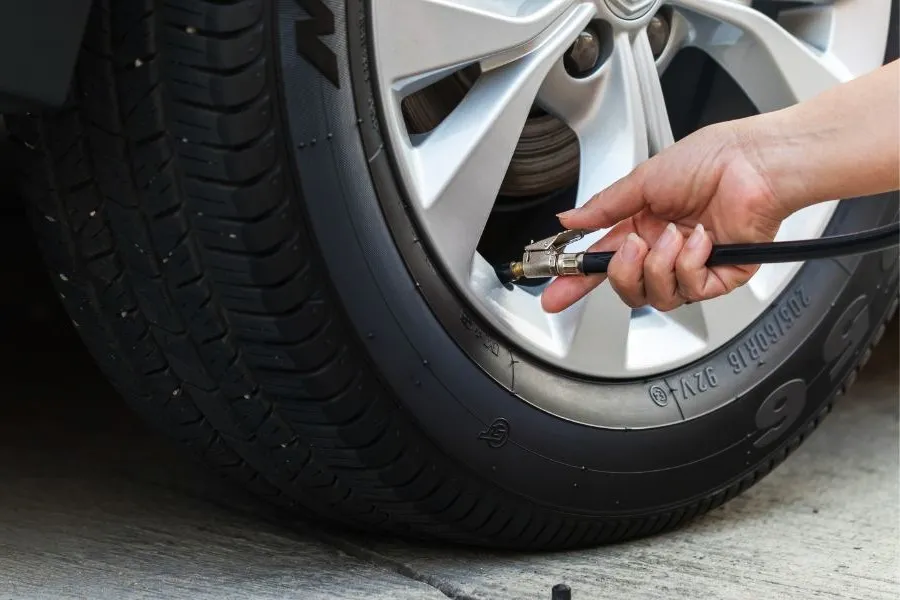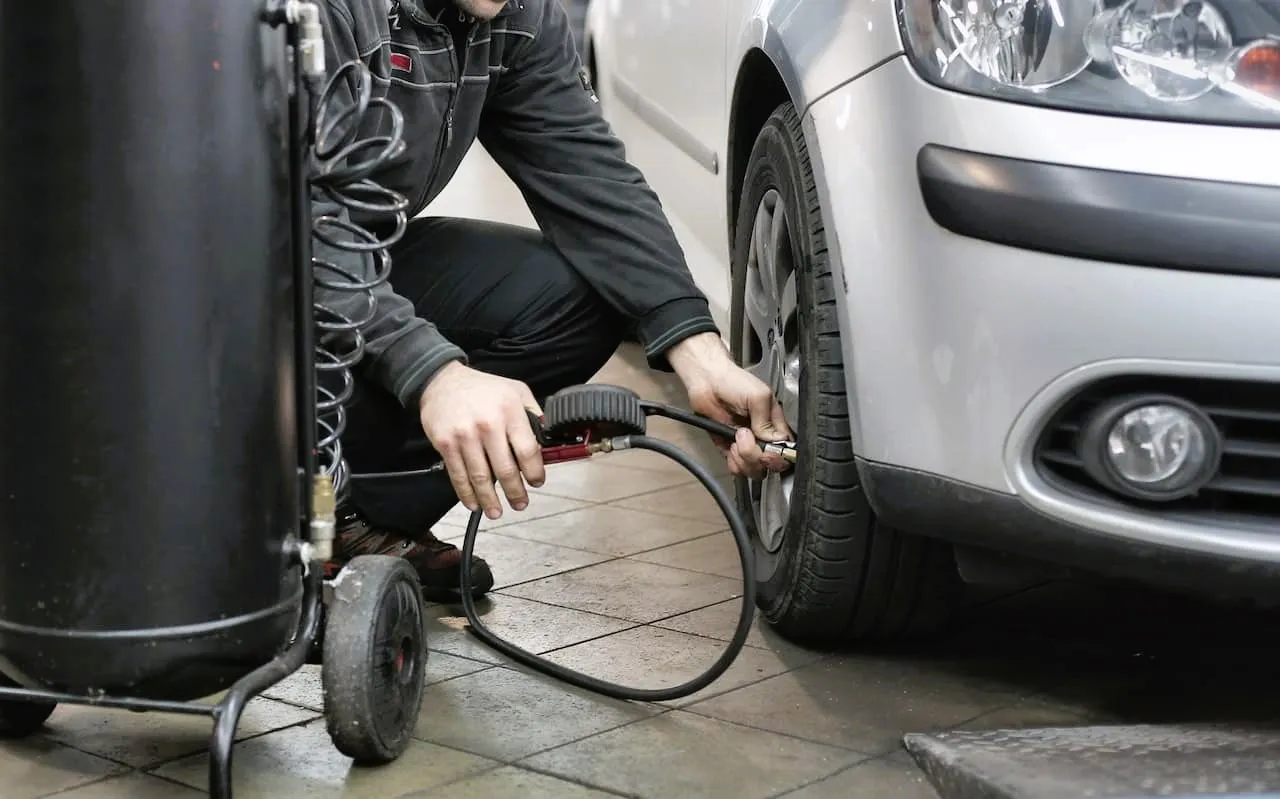Knowing how to let air out of tire is fundamental for any vehicle owner. Whether you’re a cyclist, a motorist, or just dealing with a leaky tire, safely releasing air from your tires is crucial. In this article, you’ll learn multiple methods to let air out of tires, from the traditional gauge method to quick alternatives when you need the right tools.
This post will also address common questions like when and why you should let the air out of your tires, ensuring that your vehicle’s tires remain safe and functional. So, read on and learn more about tire maintenance and safety.
Methods of Letting Air Out from Tire
As an enthusiast or a professional, there’s a time when you wonder, how do you release air from a tire? Here are some methods that work; look at them and apply them in your life to save:

1- Using a Tire Pressure Gauge:
- Remove the valve cap from the tire’s valve stem.
- Press the gauge firmly onto the valve stem to read the current tire pressure accurately.
- If you need to release air, gently press the gauge’s release valve while still on the stem.
- Monitor the pressure until it reaches the desired level, then remove the gauge.
But what if you don’t have a gauge? Continue reading to learn how to let air out of tire without gauge.
2- Releasing Air without Special Tools:
Don’t worry, you’re not alone in this mess, and here’s how to release air from a tire without tools:
- Press your thumb or thumbnail onto the valve stem’s center pin.
- Listen for the hiss of air escaping.
- Periodically check the tire pressure with a gauge to avoid over-deflating.
This simple technique lets you let air out of your tire in emergencies or when you don’t have access to traditional tools.
3- Using a Screwdriver:
To learn how to let air out of tire with screwdriver, follow these steps carefully.
- Insert the screwdriver’s tip into the tire’s valve stem, applying gentle pressure.
- Listen for the hiss of air escaping.
- Be cautious not to simultaneously damage the valve stem or release too much air.
- Continue monitoring the tire pressure until it reaches the desired level.
This method suits emergencies when specialized tools like a gauge are unavailable.
4- Using a Gas Station Air Pump:
When you need to adjust tire pressure on the road, knowing how to let air out of a tire at a gas station can be a lifesaver. Gas stations often provide air pumps with pressure gauges, making the process convenient. Attach the nozzle to the valve stem and follow the station’s instructions.
Keep an eye on the indicator to ensure you reach the desired pressure level, and you’ll have your tires perfectly adjusted for a safer and more efficient ride.
5- Releasing Air from Bike Tires:
Mastering how to let air out of bike tires is essential for cyclists. Bike tires, like their larger counterparts, have valve stems that allow air adjustment.
- To release air, locate the valve stem on your bike tire.
- Press a gauge or your thumb against it.
- Now, listen for the hissing sound as air escapes.
- Periodically check the pressure to prevent under-inflating or over-inflating, ensuring a smooth and safe ride.
6-Using Machine to Take Air Out of Tire:
You can use a tire deflation machine to release air from a tire efficiently. Here’s a step-by-step guide on how to take air out of a tire with a machine:
- Locate a tire machine equipped with deflation capabilities.
- Secure the tire on the machine’s mounting head.
- Activate the machine’s deflation mode or feature.
- Monitor the pressure display and stop when the desired level is reached.
- Safely remove the tire from the machine.
How To Get Air Out of Tires Fast?
Follow the steps carefully and learn how do you get air out of tires fast:

- Remove the valve cap from the tire’s valve stem.
- Firmly press the valve stem’s center pin with a gauge or similar object.
- Listen for the hissing sound as air escapes.
- Continuously monitor the tire pressure to avoid over-deflation.
- Once you reach the desired pressure, release the pin, and replace the valve cap.
Should You Let Air Out of Tires?
It would be best to let the air out of the tires when necessary to maintain the recommended tire pressure. Overinflated tires can result in a harsh ride and reduced traction, while underinflated tires can lead to poor fuel efficiency and decreased handling.
Regularly check your vehicle’s recommended tire pressure in the owner’s manual or the driver’s side door jamb and adjust as needed to ensure safe and optimal performance.
A tire pressure of 38 psi may be too high, depending on your vehicle’s recommended pressure. Check your owner’s manual or the driver’s side door jamb for the correct tire pressure specification.
A tire pressure of 40 psi can be appropriate for passenger cars and sports cars within the recommended range of 32-40 psi. However, it may not be suitable for smaller cars with lower recommendations or larger trucks.
A tire pressure of 40 psi can offer a balanced performance, comfort, tread wear, and fuel economy, making it a suitable middle ground for many vehicles.
From traditional tools like tire pressure gauges to quick alternatives when tools are unavailable. It’s important to remember that maintaining the right tire pressure is crucial for your safety and your vehicle’s performance.
Overinflated or underinflated tires can lead to various issues, so always check your recommended tire pressure, and make necessary adjustments. Mastering how to let air out of tires ensures a smoother, safer ride.




